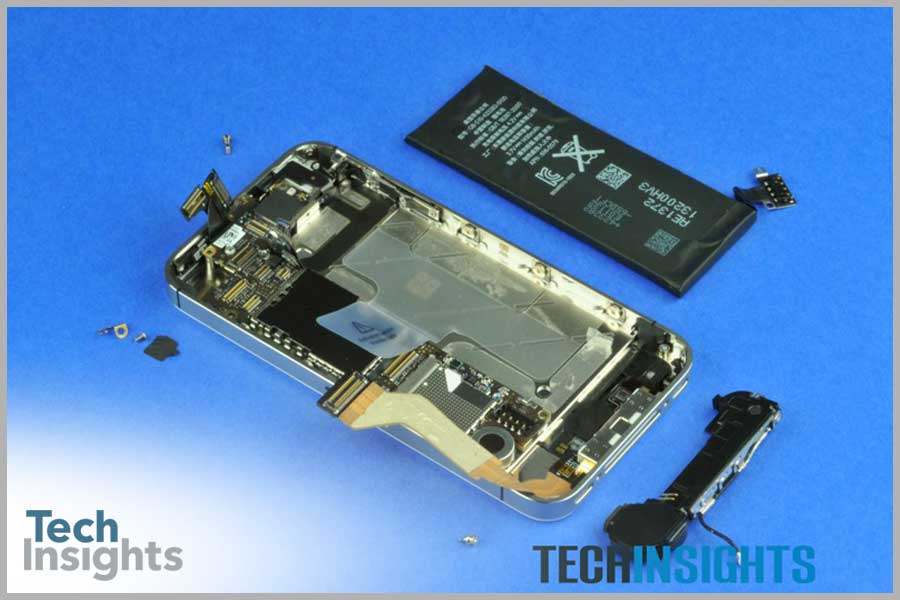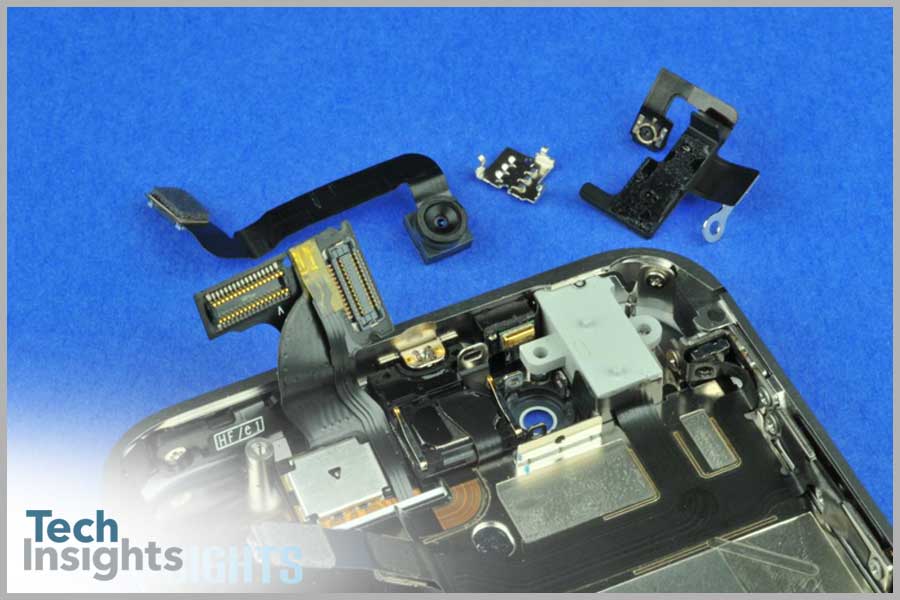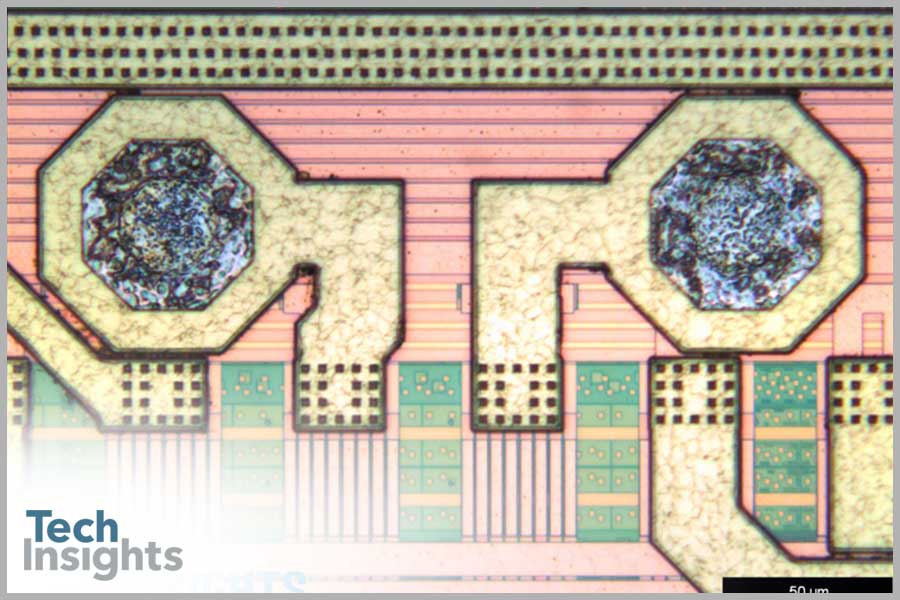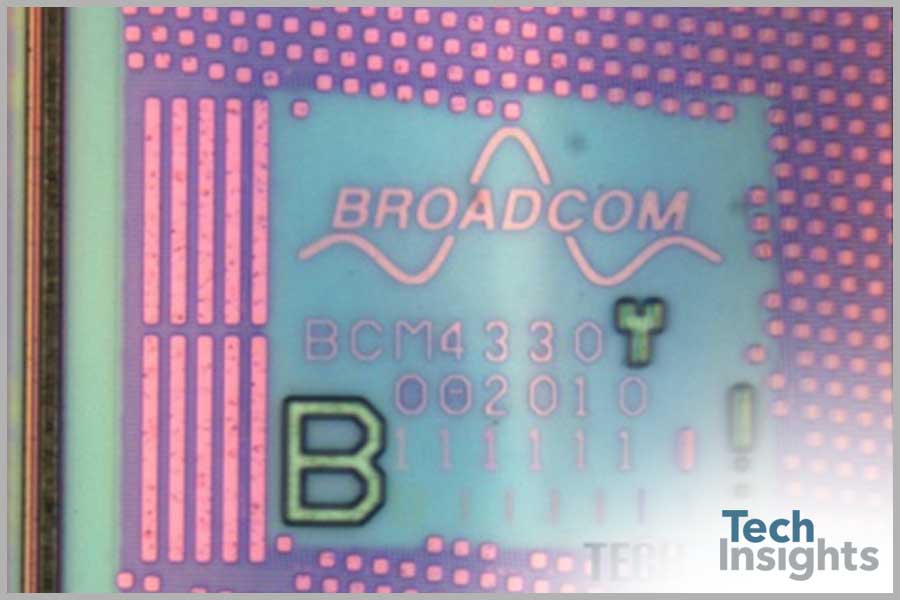Apple iPhone 4s Teardown
Posted: October 14, 2011
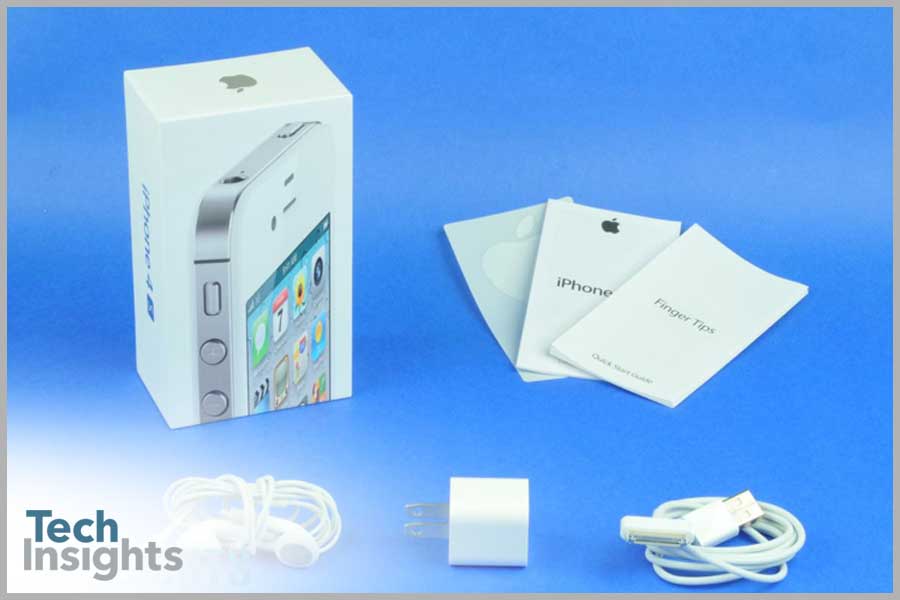
Apple iPhone 4s
Since the June 24th release of the iPhone 4, Apple’s dedicated fans have eagerly anticipated the next iteration of the immensely popular iPhone series of handsets. As rumors, leaked images of parts, and speculation spread across the internet, Apple finally hinted at news of a new phone at an October 4th conference. As the new CEO, Tim Cook, took the stage, the announcement was made – the next handset would be the Apple 4S.
So what differs from the original iPhone 4 to the new iPhone 4S? Firstly, is the design of a singular handset that will work across multiple carrier platforms such as GSM and CDMA. This was not a surprise to us as such a capability was evident in the Verizon version of the iPhone 4. That version incorporated the first use of Qualcomm’s MDM6600 – a chipset that was already capable of working across both GSM and CDMA mobile standards. The foundation for a “world phone” was set and our discovery of Qualcomm MDM6610 confirmed our initial speculation that the Verizon iPhone 4 was precursor for this design change. Not only that but it finalizes Apple’s switch from Infineon to Qualcomm. Qualcomm was able to secure not only the design win of the MDM6610, but also the RTR8605 RF transceiver and their PM8028 power management device.
Another major winner is Broadcom. Not only did Broadcom maintain their socket from the iPhone 4, they convinced Apple to upgrade to one of their newer devices, the BCM4330 802.11n WiFi/Bluetooth/FM Radio chipset. This is the second major design win for Broadcom who saw the same IC incorporated in the very popular Samsung Galaxy S II handset.
Cirrus Logic and Dialog Semiconductor also found their companies’ products upgraded within the iPhone 4S. Apple selected the CLI1560B0 Audio Codec moving from the CLI1495 from the iPhone 4. Apple also upgraded to Dialog’s D1881A Power Management IC, moving from the D1815A of the previous handset.
The second biggest change from the iPhone 4 to the iPhone 4S is one that was telegraphed on the release of the iPad 2. The selection of the Apple A5 dual-core processor should come as no surprise to anyone familiar with Apple’s tendency to use their tablet format as a precursor to a new processor. As the iPad’s use of the A4 processor alluded to its use in the iPhone 4, the iPad 2 and the introduction of the A5 processor within its casing foretold its use in the iPhone 4S.
Other winners for design sockets belong to TriQuint, Skyworks, Texas Instruments and STMicroelectronics.
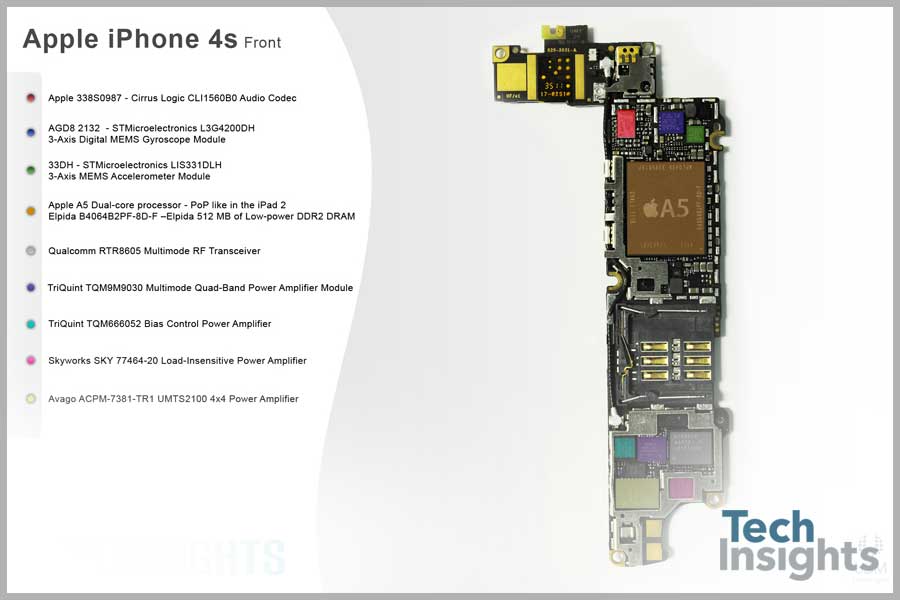
Apple iPhone 4s - Board Shots
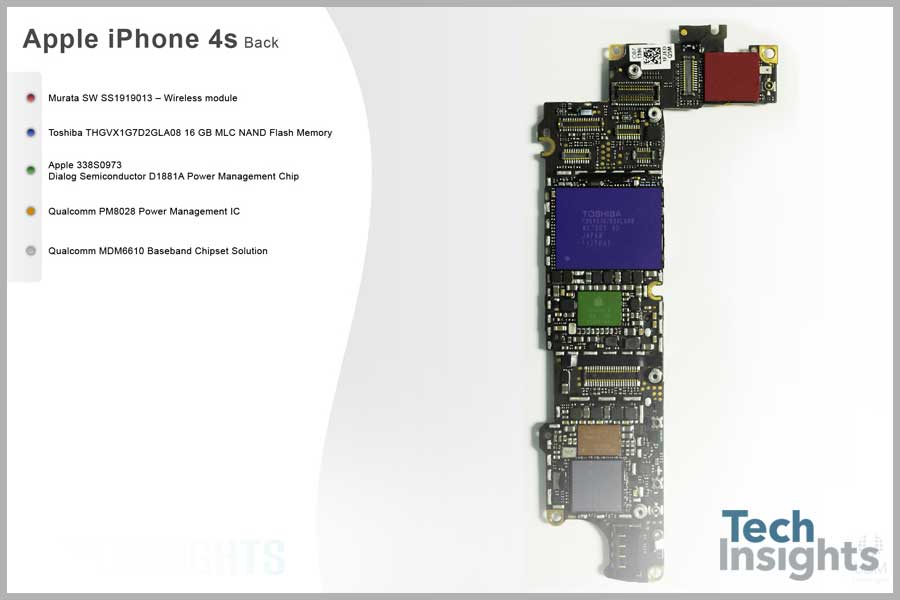
Apple iPhone 4s - Board Shots
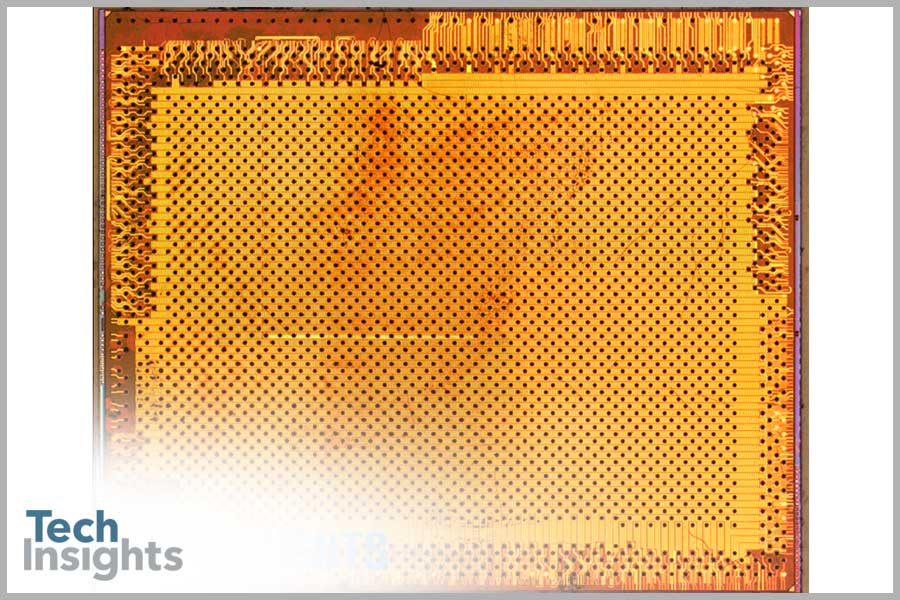
Apple A5 Processor
The Apple A5 Processor
After making its first appearance inside the Apple iPad 2, the Apple A5 dual-core processor has now found its way into the iPhone 4S. The Apple A5 features two ARM cores and supports Low Power DDR2 DRAM memory.
Much like the processor found in the iPad 2, this version of the A5 is nearly identical in terms of die width and die length – which is a good indicator that this version of the A5 is manufactured at the 45nm process node again. A cross-section is required to determine if this version of the A5 is manufactured by someone other than Samsung (such as TSMC) but early indications show that this is most likely from Samsung.
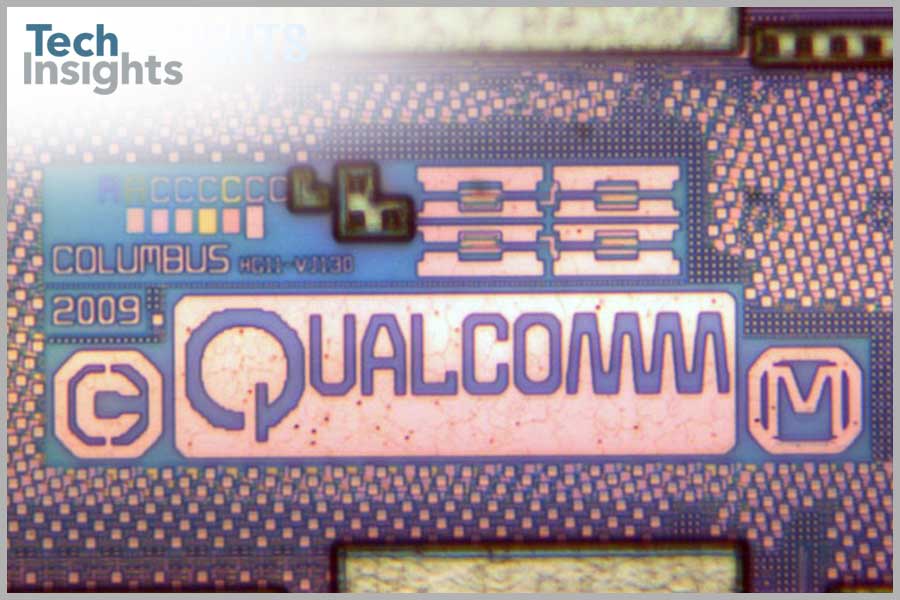
Qualcomm MDM6610
Qualcomm MDM6610
The MDM6610 chipset from Qualcomm is an iteration of the MDM6600 and a member of their Gobi line of connectivity solutions. Much like the MDM6600 that was first used in the CDMA version of the Apple iPhone 4 that was released late in 2010, this chipset features multi-mode - supporting GSM/GPRS/EDGE, CDMA, HSDPA and HSPA+,as well as the 1x EV-DO standard. The MDM6610 really is a single chip, which was evident to see once we decapped the device. Doing so revealed the baseband and transceiver on separate dies. Below are images of the MDM6600 die, we’ll have images of the new die available on our website.
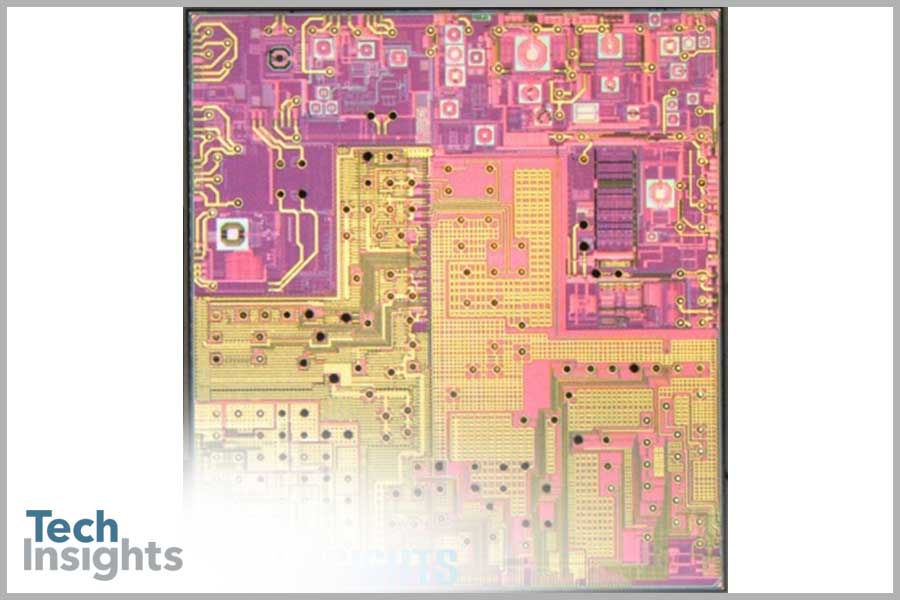
Broadcom BCM4330
Broadcom BCM4330
Broadcom scores a major design win inside the new iPhone 4S with the discovery of the BCM4330 MAC/Baseband/Radio with Integrated Bluetooth and FM Transceiver located in the Murata SW SS1919013 ceramic module. An upgrade from the BCM4329 primarily around the implementation of Bluetooth 4.0, the BCM4330 was first found within the Samsung Galaxy S II.
Primary Component Listing
- Apple A5 Dual-core processor – PoP featuring: Elpida B4064B2PF-8D-F –Elpida 512 MB of Low-power DDR2 DRAM
- Qualcomm RTR8605 Multimode RF Transceiver
- AGD8 2132 - STMicroelectronics L3G4200DH 3-Axis Digital MEMS Gyroscope Module
- 33DH - STMicroelectronics LIS331DLH 3-Axis MEMS Accelerometer Module
- Apple 338S0987 – Cirrus Logic CLI1560B0 Audio Codec
- TriQuint TQM9M9030 W-CDMA Band I / VIII Duplexers + 1800 MHz Filter
- TriQuint TQM666052 W-CDMA Band I / II & CDMA 1900 MHz PA (w/ FBAR Duplexer for 1900 MHz only)
- Avago ACPM-7181-TR1 Quad-band GSM Power Amplifier
- Skyworks SKY 77464-20 W-CDMA Band V / VIII & CDMA 850 MHz Power Amplifier (w/ SAW Duplexer for 850 MHz only)
- Qualcomm MDM6610 Baseband Chipset Solution w/ 64 MB Mobile DDR SDRAM inside
- Qualcomm PM8028 Power Management IC
- Apple 338S0973 – Dialog Semiconductor D1881A Power Management Chip
- Toshiba THGVX1G7D2GLA08 16 GB MLC NAND Flash Memory
- Murata SW SS1919013 – Wireless module
Aleady a subscriber?
TechInsights Teardown subscribers already have access to exclusive content in the TechInsights Platform.
Interested in a subscription?
TechInsights offers subscriptions to the broadest range of analysis and expert commentary. Contact us to learn about our many subscription offerings.





